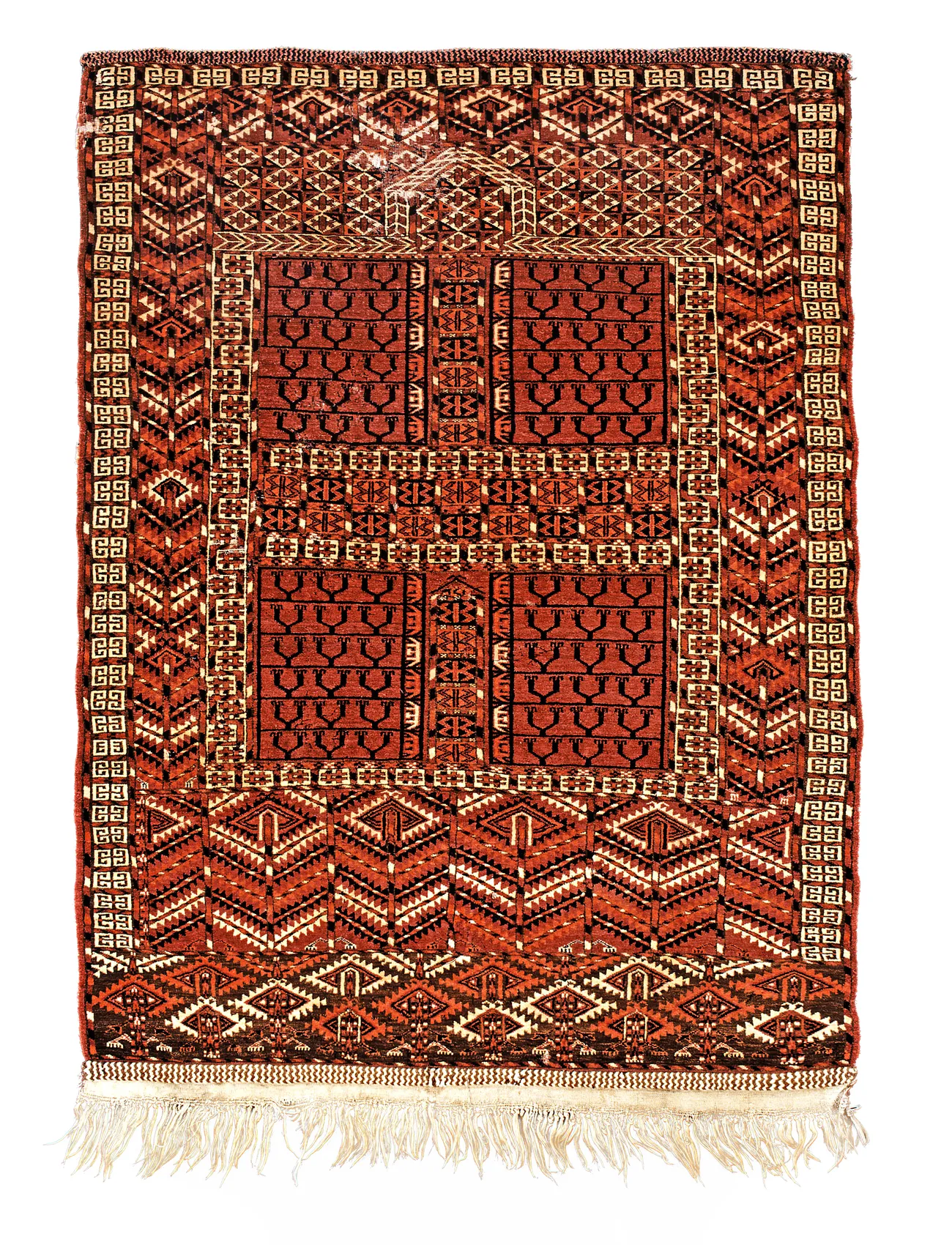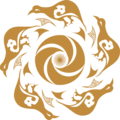In addition to handicrafts from the oasis towns objects from nomadic tradition constitute a focal point in the Rickmers collection. После установления русско-афганской границы в After the Russian-Afghan border was established in 1887, some of the Yomud and Chovdur Turkmen tribal groubs, belonged to the Khanate of Khiva, while parts of the Ersari Confederation belonged to the Emirate of Bukhara. Since we know that Rickmers visited the Merv Oasis, which the Russians had conquered in 1884, he might have acquired the weavings there, but they were also available as merchandise in the Emirate of Bukhara and other places.
The Ethnological Museum holds a total of about 60 Turkmen weavings from Rickmers. The majority of the pieces, which were studied and published by Robert Pinner (1993) are not Bukhara carpets – much coveted in Europe in Rickmers’ time – but rather smaller objects such as door hangings from yurts, yurt bands, and the woven front sides of bags. The attribution of the pieces to specific Turkmen groups was due to scholarly research of Robert Pinner.
You can get acquainted with other samples of ancient ceramics of Uzbekistan in the book-album "Collections of the Federal Republic of Germany" (volume XI) from the series "Cultural Legacy of Uzbekistan in the World Collections".
The main sponsor of the project is the oilfield services company Eriell-Group.

